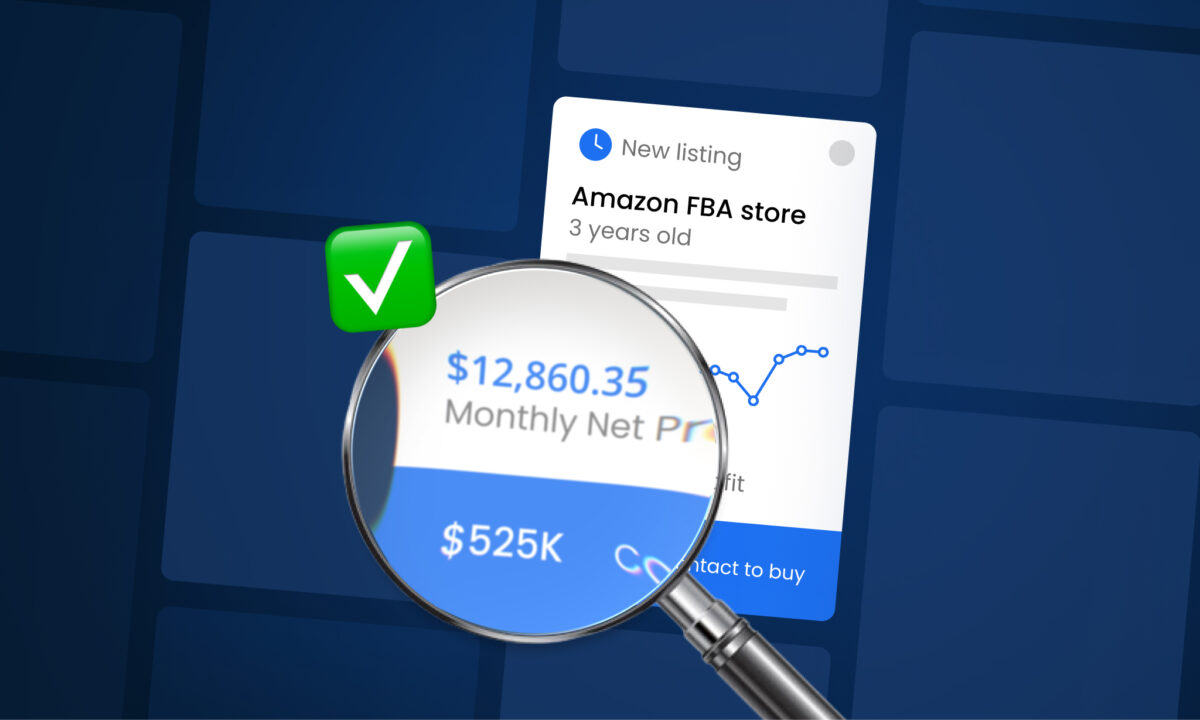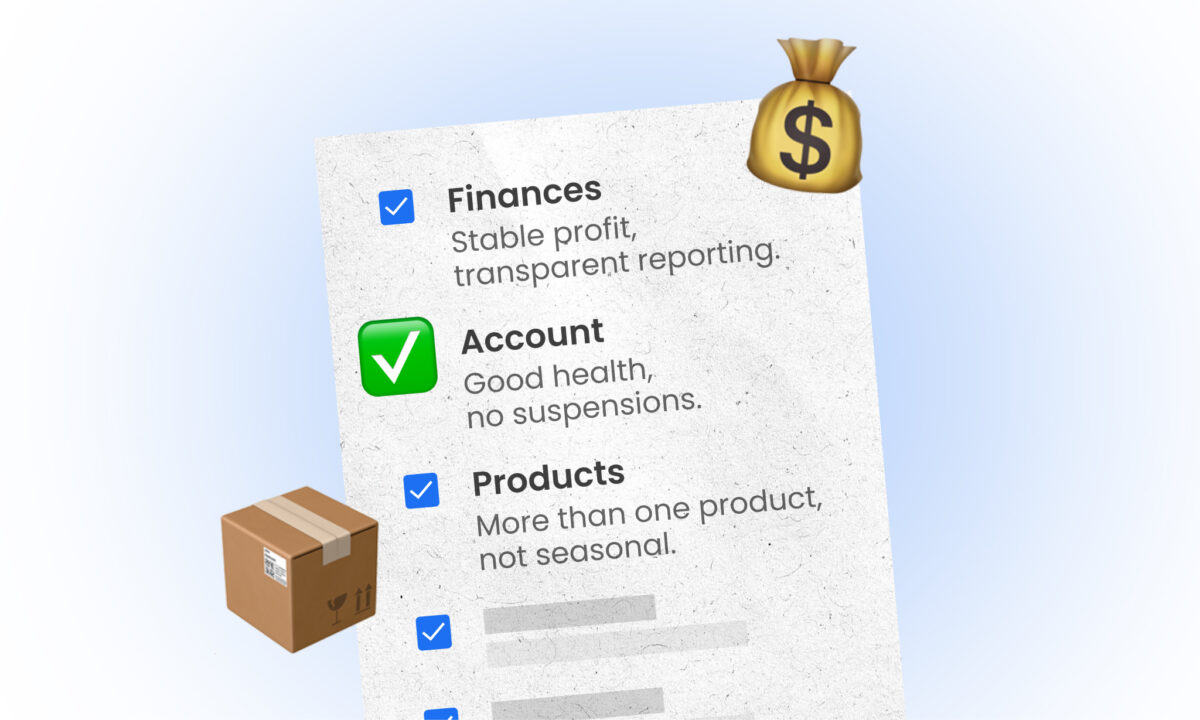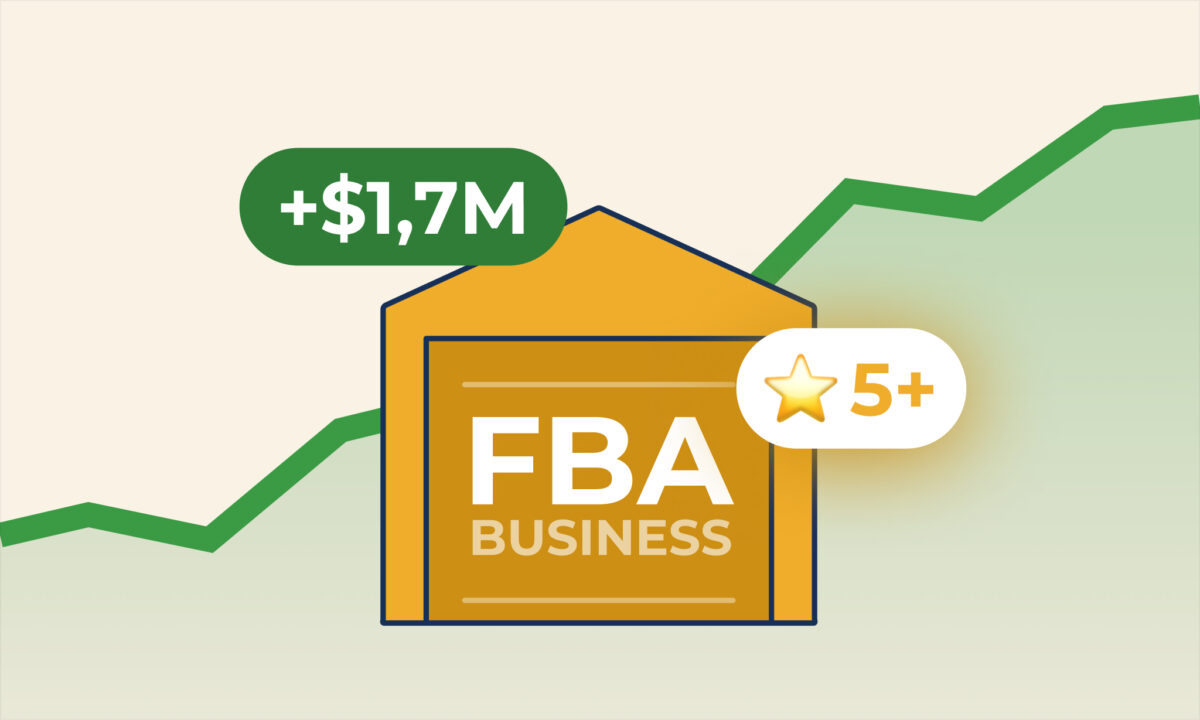Buying an Amazon FBA business can be an exciting shortcut to online entrepreneurship – but before you make a move, you need to do your due diligence. This is the process of thoroughly evaluating a business before purchase to ensure everything checks out and you’re not inheriting any unexpected issues.
This guide is tailored for first-time or inexperienced buyers and includes a practical checklist of what to look for when assessing an FBA business.
1. Financial Due Diligence: Verify the Numbers
Start by requesting at least 12-24 months of financial statements (Profit & Loss statements, balance sheets, etc.). Cross-check these with Amazon Seller Central reports, invoices, and bank statements to verify their accuracy.
- Accounting method: Check whether the business uses accrual or cash accounting. Accrual is preferred for e-commerce as it aligns income and expenses with when they’re incurred.
- Seller’s Discretionary Earnings (SDE) & Add-backs: Review any add-backs carefully to confirm they are truly non-recurring or owner-specific expenses.
- Revenue & Profit Trends: Look for consistent performance. Declining margins or erratic trends may need further investigation.
- Amazon Fees: Ensure all fees (referral, FBA, advertising, etc.) are included in the financials.
Checklist: Review historical financials, validate add-backs, check accounting method, and verify full fee breakdowns.
2. Product and Sales Performance
Understand which products are generating revenue and how stable those sales are.
- Top-Selling Products: Identify revenue concentration. A business relying heavily on one SKU carries more risk.
- Sales History: Review at least a year’s worth of sales data. Look for patterns and seasonality.
- Product Reviews & Ratings: High review counts and ratings often signal defensibility. Poor reviews may suggest quality issues.
- Competition & Market Trends: Evaluate how competitive the niche is and whether demand is growing or shrinking.
Checklist: Assess SKU concentration, sales history, product ratings, and niche competitiveness.
3. Supply Chain & Supplier Relationships
A smooth, reliable supply chain is critical to maintaining operations.
- Supplier List: Review who the suppliers are, how long the relationships have lasted, and whether contracts are in place.
- Lead Times: Understand how long it takes to restock. Long lead times may require more working capital.
- Inventory Management: Check inventory turnover, stockouts, and storage methods.
- Logistics: Review how inventory is shipped to Amazon – directly or through a 3PL. Confirm costs and shipping terms.
Checklist: Confirm supplier reliability, review contracts, assess lead times and logistics setup.
4. Advertising & Marketing Performance
Amazon PPC often drives a large portion of FBA sales. You’ll want to assess the cost and effectiveness of those campaigns.
- Ad Spend and Return: Analyze ACoS (Advertising Cost of Sales) and overall ROI.
- Campaign Structure: Well-structured PPC campaigns are easier to scale and optimize.
- External Channels: Note any email lists, social media accounts, or other marketing assets included in the sale.
- Brand Presentation: Check for A+ content, product videos, and quality images.
Checklist: Review PPC reports, marketing assets, branding quality, and total ad spend vs. sales.
5. Operational Complexity
Understand what day-to-day operations look like so you can plan accordingly.
- Workload: Ask how many hours per week the seller spends and what tasks are involved.
- Team: Identify if there are any virtual assistants, employees, or agencies involved.
- Documentation: Look for SOPs (Standard Operating Procedures) or training materials.
- Order Volume & Customer Service: Higher order volume may mean more support tickets or returns.
Checklist: Gauge owner workload, staff involvement, SOP availability, and customer service burden.
6. Amazon Account Health
The health of the Amazon account is just as important as the product catalog.
- Performance Metrics: Review Order Defect Rate, Late Shipment Rate, and Policy Compliance.
- Account Health Rating: Amazon assigns an overall rating. Aim for “Healthy” status.
- Violation History: Check for any history of suspensions, warnings, or unresolved issues.
- Feedback & Reviews: Look at seller feedback in addition to product reviews.
Checklist: Review full account health dashboard, violations, and feedback metrics.
7. Legal & IP Considerations
You need to ensure the business’s assets are properly protected and transferable.
- Trademarks & Brand Registry: Confirm brand trademarks are registered and will be transferred.
- Patents & Copyrights: Check for any unique product features or intellectual property claims.
- Image & Content Rights: Ensure product photos and copy are original or properly licensed.
- Non-Compete Agreement: The seller should agree not to compete post-sale.
Checklist: Verify trademarks, assess IP ownership, confirm asset transferability, and include non-compete terms.
8. Key Risk Areas to Watch
Some risks are common across FBA businesses. Be alert to:
- Over-reliance on a single product or supplier
- Heavy dependence on ad spend to sustain revenue
- Weak margins or declining sales trends
- Poor account health or history of Amazon policy violations
- Lack of defensible branding or product differentiation
Checklist: Identify dependencies, assess defensibility, and weigh market or operational risks.
Final Thoughts
Buying an Amazon FBA business can be a smart move, but only with careful preparation. A thorough due diligence process helps you uncover both opportunities and potential pitfalls. Use this checklist to guide your evaluation and make more confident decisions.
Disclaimer: exit.io is a platform that connects buyers and sellers of Amazon businesses. This article is for informational purposes only and does not constitute financial or business advice.







